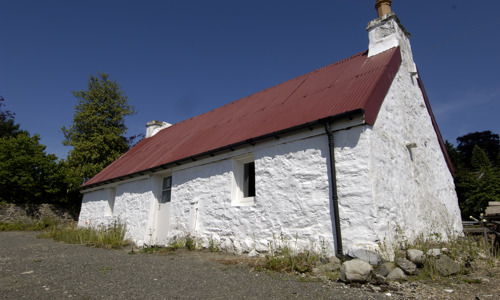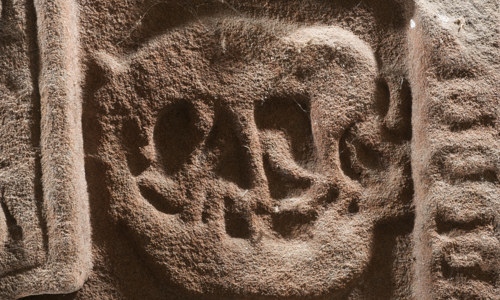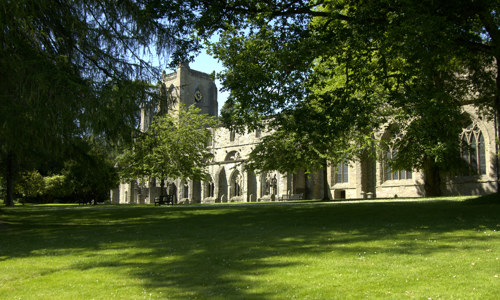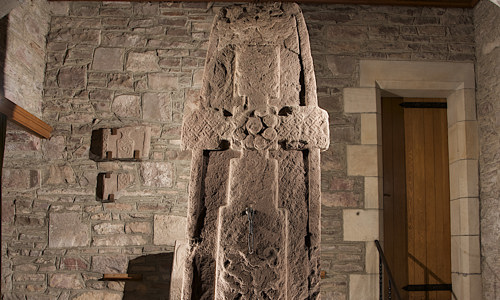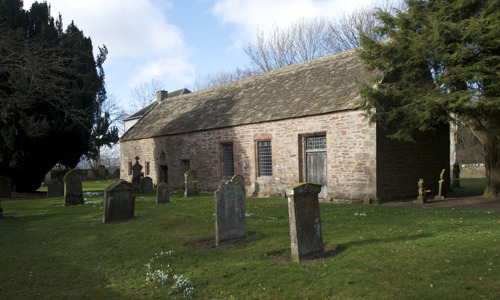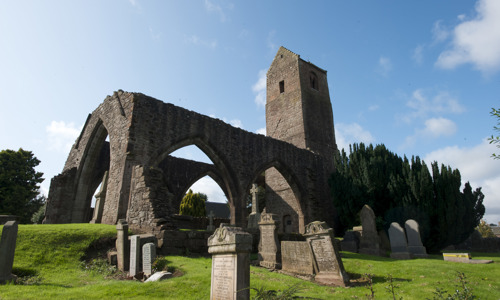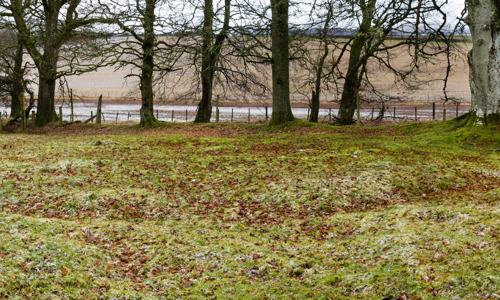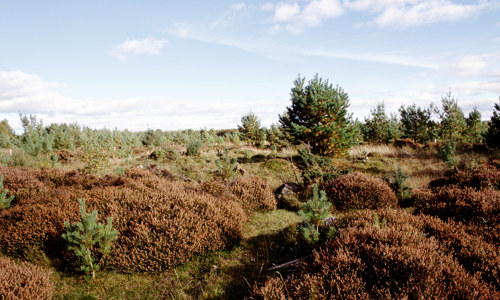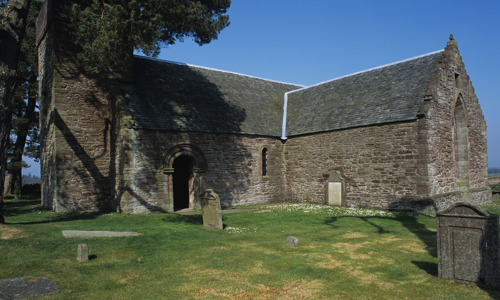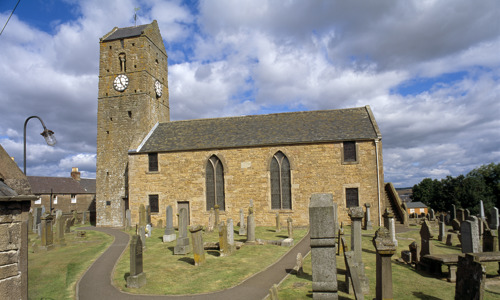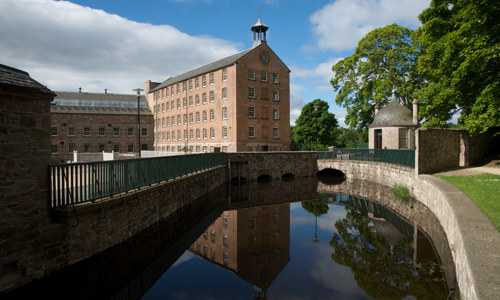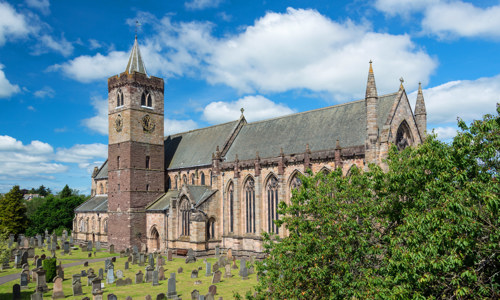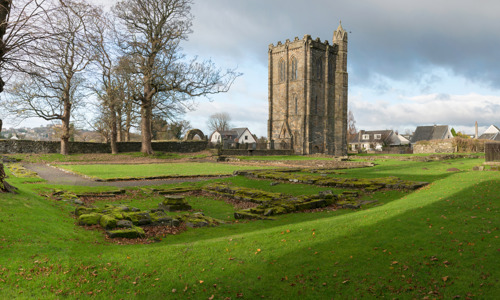History
A church at ‘Carantuli’ is first mentioned in papal letters to the bishops of Moray around 1250.
The church we see today was probably built around 1533, when Alexander Stewart, of nearby Grandtully Castle, granted lands to St Andrews Cathedral in exchange for a priest to take charge of the local church.
In about 1636, Sir William Stewart of Grandtully and his spouse Dame Agnes Moncrieffe modified the building in a period when Charles I was reintroducing adornment in Scottish churches.
The church was extended to the west, and the fine painted ceiling installed.
A stunning survival
The painted ceiling at St Mary’s Church is one of only two ecclesiastical surviving painted ceilings from the 1600s in Scotland – the other is at Skelmorlie Aisle at Largs Old Kirk. The decoration includes:
- 28 roundels of varying shapes and sizes depicting saints, proverbs and the achievements of the Stewart family
- a background of fruit, flowers and reclining angels
- decorative strap work interlinking the roundels
All these decorative features are arranged around a central panel, depicting the resurrection. In the central panel we see:
- dead rising from their graves at the summons of a pair of angels
- a dying figure in a canopied bed about to be struck down by death himself
- vine-draped pillars and pediment
The church remained in limited use after a new parish church was built in 1806. Its ecclesiastical use finally ended in 1892.


